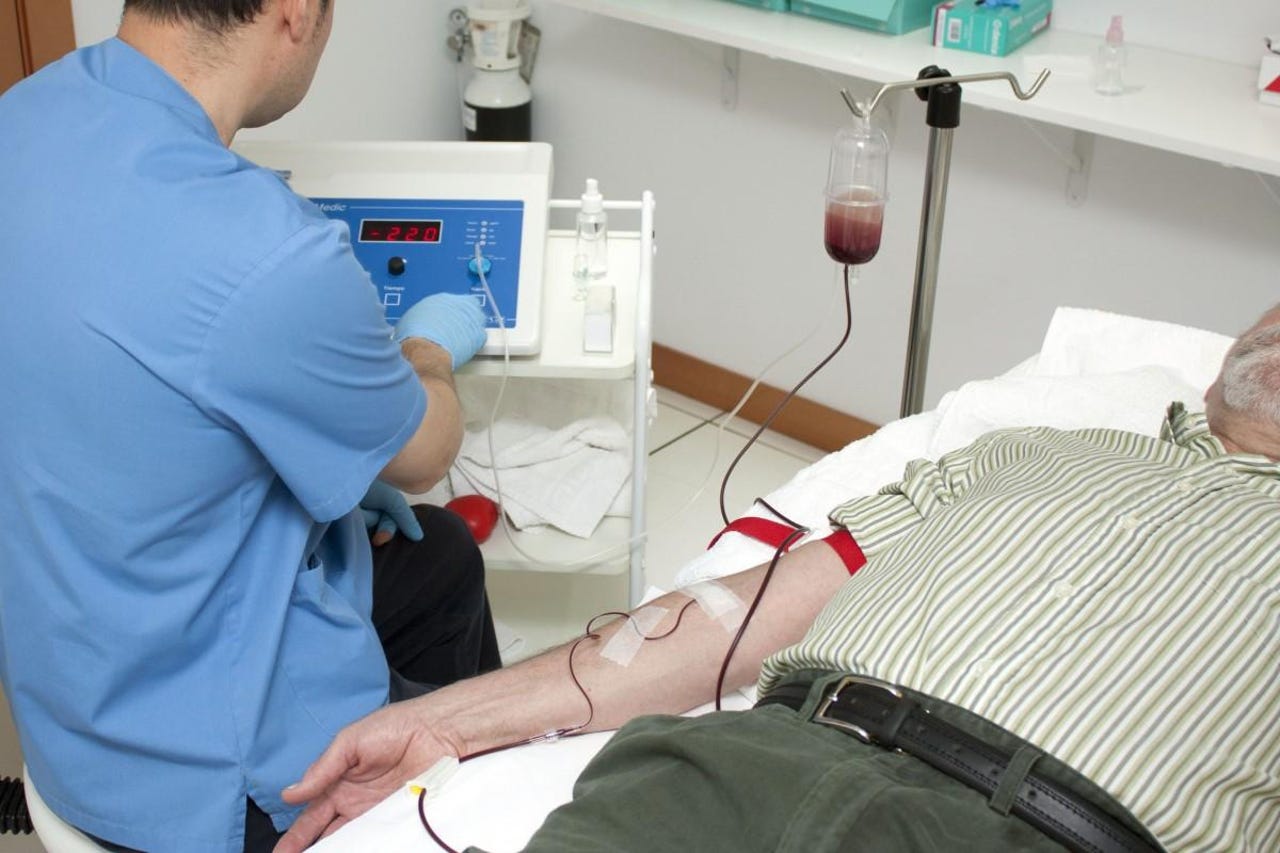A simple change to overhaul healthcare (hint: automation)


Between March and June, U.S. hospitals and health systems collectively lost about $51 billion per month, with increased use of PPE and new care protocols playing big roles. To resume treating a higher volume of patients and restore revenue, hospitals and clinical care facilities continue spending and making changes.
Face shields, temperature checks and more frequent sterilization are just a few measures many are implementing to protect patients and staff when they need to be in close contact, but what if they reduced the need to be in close contact in the first place?
Robots can help health systems increase efficiency and enhance care while protecting patients and staff by eliminating contact points between them. Hospitals are littered with opportunities for smart automation, from front desks to operating rooms to outpatient settings.
I caught up with Dr. Eric Dusseux, CEO of BIONIK Laboratories, a company that makes robots used in physical therapy and rehabilitation, to talk about where hospitals can most easily automate, where robots and AI are making a real impact, and the challenges ahead for healthcare robotics and automation.
GN: Where's the low-hanging fruit for hospitals to automate? What are we already seeing early signs of automation in hospitals and how will that demand grow?
Dr. Dusseux: The processing and analysis of data is one of the areas where hospitals and healthcare facilities can most effectively automate. Traditionally, healthcare staff had to sit and record patient results on a clipboard or computer; but now, healthcare networks can connect their patient-facing medical devices to the cloud so that patient progress can be automatically and instantly tracked. As this data is automatically generated and recorded, it is less biased than data collected by human doctors, making it more appropriate for decision making and recommendations. The data can then be used in a facility or network to make informed decisions in real time, spot room for progress and inefficiencies, and compare facilities versus the ones which have best practices, enabling managers and executives to manage, train and adapt their resources accordingly.
GN: The human touch has long been a hallmark of medicine. How can robots improve care?
Dr. Dusseux: In using robotics to support rehabilitation and treat deficits from neurological disorders, such as stroke, we are already seeing the difference that they can make. The risk of patients suffering from stroke usually begins compounding around the age of 55 and the largest generation in America, the baby boomers, are now all 55 or older. It is important that we explore every possibility of making stroke treatment more effective, with America's largest generation now in the window of compounding stroke risk.
GN: How have you seen patients respond to robots in healthcare? Do you expect attitudes to evolve, and has the pandemic changed the way automation is viewed by patients?
Dr. Dusseux: Robotics can support patients as needed and detect movements that human therapists cannot, and as a result, record between 600 to 1,000 movements per one-hour session, contrary to human-only physical therapy which results in about 32 to 80 movements per one-hour session. As physical therapy's impact depends so heavily on patients performing a high intensity of simple movements to elicit neuroplasticity (the way the brain heals) and perceiving progress in order to be encouraged to proceed, this possible 3,000 percent rise in recorded movements is crucial.
In May, BIONIK proudly donated an InMotion robotic system to Einstein Healthcare Network's MossRehab. It is being utilized in MossRehab's CORE+ Unit, which it created to provide rehabilitation to patients infected with or recovering from COVID-19. Patients who have suffered from neurological conditions like stroke often lose motor functions and must undergo physical therapy in a timely manner to regain it. The pandemic created challenges in treating patients, so this allows them to get the treatment they need in a way that is safe for them and the clinicians alike.
GN: What are the big hurdles to automation in hospitals? How can automation companies overcome those barriers?
Dr. Dusseux: The reluctance of hospital CFOs and administrators to invest in emerging technology is one of the single greatest obstacles to the use of robotics and automation in healthcare networks. Many healthcare executives and CFOs are judged on quarterly or annual results, so they worry that by the time these devices provide ROI (return on investment), they will already have been removed from their positions. With that in mind, it must be made clear to them that if they are also integrated with the cloud, robotics and automation will pay immediate dividends, with their staff being more impactful, more efficient and happier. The boosts provided to patient care and staff efficiency will be impossible to ignore, which will result in a higher rate of adoption, better outcomes, better access for patients and compounding ROI.